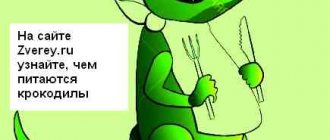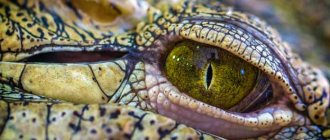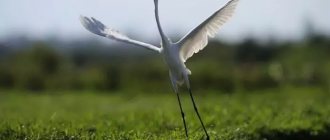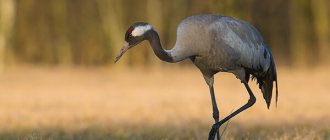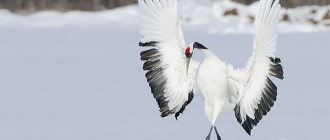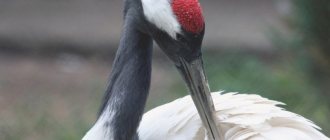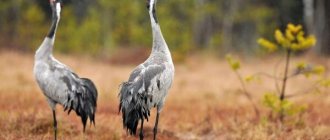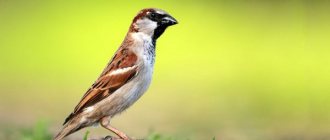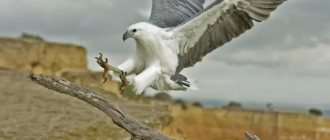Appearance
The length of the crane in height, depending on the species, varies from 0.9 to 1.75 m, and body weight can range from 2 to 11 kg.
The body is elongated, drop-shaped. The long flight feathers of the wings when the bird is standing give the impression of having a lush long tail.
The neck is long. The head is small, neat, partially feathered, the color of the bare skin is red or orange. The beak is straight, elongated, 0.2-0.3 m long. The wingspan is approximately 2 m.
A description of the crane would not be complete without indicating the color of the plumage. The predominant colors are gray, white, black.
Features of reproduction
Cranes are monogamous and remain married throughout their lives. Sexual maturity occurs at the age of 3 - 5 years, and pairs are formed before arriving at the nesting sites.
The union of two birds is celebrated with a mandatory mating ritual, which is called the dance of the cranes. Mutual courtship consists of bouncing, small dashes and bows. The male and female flap their wings, spin, throw twigs and tufts of grass into the air, and all this is accompanied by a drawn-out melodic song. After mating, the pair begins building a nest.
Outside the mating season, cranes are not aggressive, but they jealously guard their nesting territory from strangers, the area of which varies from 1 to 40 km2. For the nest, a secluded, hard-to-reach place is chosen right in the water, in shallow water, often in dense thickets of reeds and reeds.
The finished nest of cranes is a large compacted pile of tree branches, dry grass, pieces of moss and peat, up to 3 m in diameter.
Cranes are clean and carefully care for their feathers, but immediately before incubation they are specially coated with silt and wet earth. If the crane looks downright dirty in the photo, it means the bird is trying to camouflage itself in order to become less noticeable to predators and humans.
The female lays 1 to 3 light beige speckled eggs weighing about 200 g. Both parents incubate, and the incubation period lasts from 28 to 32 days. The chicks are born naked and helpless, but after a day they are already firmly on their feet. In order not to attract enemies, parents often crush and hide the eggshells.
Despite the small number of chicks, competition for survival often leads to the death of the weaker one. The chicks become fully feathered 70-75 days after birth and acquire the ability to fly, but they always spend the first winter with their parents.
In the wild, cranes live up to 20 years, and in captivity, life expectancy increases to 80 years.
Nutrition
Cranes are classified as omnivorous birds. From vegetation, they consume various parts of aquatic and terrestrial plants, including their seeds and fruits.
Favorite foods are grains. As for animal feed, it can be:
- insects;
- amphibians;
- mice;
- snakes;
- lizards;
- shellfish;
- fish.
The Red Book of Russia
The birds of this book (2001 edition) are an important part of the world of animals inhabiting Russia. Every year, a wide variety of species of animals, plants, etc. disappear without a trace from all over the planet. These statistics are also disappointing for birds. Over the last century alone, the planet has lost 130 species of birds.
For many species, Russia is a refuge and habitat, among them there are quite rare ones. One of them is the black crane.
This bird is so rare that ornithologists for quite a long time could not describe it, since it was almost impossible to find it. Until 1974, the black crane was considered almost a myth. Ornithologist Pukinsky first discovered a nest of this bird species on Russian territory in 1974. After certain observations, he was able to describe it.
Today this species is relatively well studied, however, it is included in both the Red Book of Russia and the International.
Demoiselle crane
The smallest species of crane. Weight – approximately 2 kg, height – 0.89 m. Characteristic features:
- the color of the feathers is gray-blue;
- part of the wing plumage is ash-gray;
- dark legs;
- the neck and head are painted black;
- on the head there are white tufts of feathers that hang from it in the shape of a crescent;
- beak yellow, short;
- eyes orange-red.
Origin
The crane bird takes its origins from the beginning of ancient times, their first appearance was recorded after the era of dinosaurs. Rock paintings provide direct confirmation of its existence during this period.
From the northern American continent, the crane family has spread throughout the world; only in Antarctica do these birds feel uncomfortable. Apparently this is why it is impossible to meet these birds there.
Only 7 species of cranes out of 15 fly to Russia. On the territory of the Russian Federation, the most common type is the Gray Crane.
White Crane
Another name for the white crane is Siberian Crane.
It is distinguished by its rather large size, snow-white plumage and black wing tips, has a red beak and legs of the same tone. There are very few Siberian Cranes left.
Habitat and lifestyle
The main habitats of cranes are near water bodies, preferably marshy areas. The only exception is the belladonna; this species has found its home in the steppes and savannas.
The bird leads its main life in the daytime; at night they sleep. If you look closely, you will notice that during sleep they stand on one leg.
These birds are monogamous, and having chosen a mate once, in most cases they remain with her for the rest of their lives. When one individual dies, the second does not always find a replacement.
Of the 15 species of cranes, only 6 are sedentary, and the rest fly to warm countries for the winter. In Eastern Siberia, every year you can see a picture when, with the onset of cold autumn days, white cranes fly away in a wedge towards China for the winter.
Photos of cranes
Where is the tattoo located?
Usually cranes are depicted on the arms - in analogy with wings, or on the shoulder blades and back, less often on the thigh with the same message that the tattoo becomes a kind of wings for a person. The image of a crane takes up quite a lot of space and is great for covering scars or other problems of an imperfect body.
When thinking about a tattoo, keep the design in mind. It will help you avoid mistakes when working on a tattoo. Cool masters often have YouTube channels, they are active Internet users, where you can watch their work and techniques - a good way to understand the future procedure.
A stork on the body is a good idea for a gift, for example, for a guy’s birthday. This is not trivial and shows deep feelings, a lifelong memory of this day. However, it is worth remembering the appropriateness.

